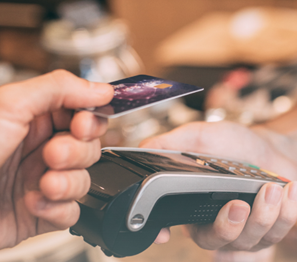
Swipe, tap and thrive: Why every single-location restaurant needs a POS
Learn why a POS system is essential for small quick service restaurants and which features help streamline orders, boost sales, and keep your café running smoothly.

An Interac machine, fundamentally, is a point-of-sale (POS) device that accepts Interac debit cards, one of the most popular payment methods in Canada. These machines are equipped to handle not only Interac transactions but also other forms of digital payments such as credit cards and contactless payments, making them versatile tools in any retail environment.
Interac machines are integral to modern payment systems, especially in a landscape where the speed and security of transactions are paramount. When a customer decides to pay using their Interac debit card, the process that unfolds is both sophisticated and streamlined, ensuring a balance between user-friendliness and rigorous security measures.
1. Card Insertion/Tap
The transaction begins when a customer either inserts their debit card into the Interac machine or uses the tap-to-pay feature. This tap-and-go technology utilizes Near Field Communication (NFC), enabling a contactless payment experience that is both quick and convenient.
2. Communication with Bank
After the card is read, the machine communicates directly with the customer's bank over a secure network. This involves sending encrypted data, including the card number and transaction amount, to the bank for verification.
3. Verification and Authorization
The bank then checks the account details to ensure that sufficient funds are available and that the card has not been reported lost or stolen. This step is crucial for preventing fraudulent transactions.
4. Transaction Approval
Once the bank verifies the transaction details, it sends an authorization back to the Interac machine, allowing the transaction to proceed. This process usually takes just a few seconds, making it exceptionally efficient.
5. Completion and Receipt
The merchant's account is credited, and the customer’s account is debited accordingly. The machine then prints out a receipt, or in some cases, sends a digital receipt to the customer, marking the completion of the transaction.
Interac machines are equipped with multiple layers of security to protect sensitive financial information and prevent fraud:
These technologies not only ensure the security of each transaction but also build trust among consumers, who are increasingly aware of digital security issues. The robustness of these systems is a testament to the extensive expertise and authoritative standing of payment processing technologies in safeguarding consumer interests in the digital economy.
For businesses, the adoption of an Interac machine is a step towards modernizing their payment systems and enhancing customer service. Here are several compelling reasons to consider:
Integrating an Interac machine into your business setup is a straightforward process. Here are the steps typically involved:
Embracing Interac machines is more than just upgrading your payment systems; it’s about enhancing the overall customer experience and streamlining your business operations. With their efficiency, security, and convenience, Interac machines are an indispensable tool for Canadian businesses aiming to thrive in the digital economy.

Learn why a POS system is essential for small quick service restaurants and which features help streamline orders, boost sales, and keep your café running smoothly.

Discover the best POS systems for small retail businesses. Learn how to streamline inventory, boost sales, and improve customer service with the right POS solution.

Learn what card testing fraud is, how it targets your e-commerce site, and the best practices you can use to detect, block, and prevent attacks before they impact your business.

What is contactless payment and how does contactless payment work? Discover how this technology speeds up transactions and improves customer experience with secure, fast processing. Learn what contactless payment is and how contactless payment works to streamline transactions. Find out how it benefits your business with faster and more secure payments.